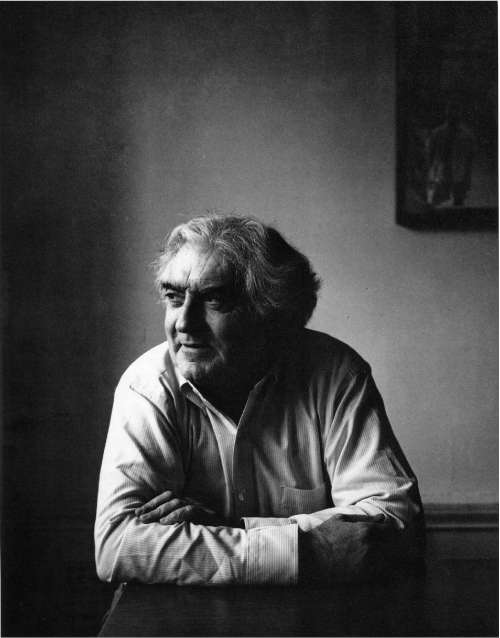Cornell Capa: 'Concerned' photographer

For those who first encountered documentary photography in the late 1960s, it was Cornell Capa's anthology The Concerned Photographer (1968) which illustrated the range, versatility and adventurousness of contemporary photojournalists. The book, which many still treasure, was a dynamic collection of photographs depicting a world in post-war crisis, which Capa described as "images in which genuine human feeling predominates over commercial cynicism or disinterested formalism".
He was born Kornel Friedmann in Budapest. His father Dezso was a tailor who with his wife, Julia, operated a prosperous dress-making business in the city. Capa had two older brothers, Lazlo, who died in 1935, and Andrei, who left Budapest in the early 1930s, re-emerging in Paris as Robert Capa, the photojournalist whose life and work would become a photo-historical legend. By 1936, Cornell, as he became, had joined his brother in France, and his lengthy career in photography began.
Although Cornell had ambitions to study medicine, he soon gravitated towards the photographic grouping which Robert had formed around himself, a circle of young photographers determined to document the world in a visionary and uncompromising way. The photographers Cornell came to know included the French documentarist Henri Cartier-Bresson and the war photographer David (Chim) Seymour. Frustrated by his lack of French and unable to study medicine, Cornell realised that the language of photography was universal and he was soon completely absorbed in photojournalism, learning his craft by developing and printing the work of Bresson, Seymour and his brother. He also changed his name to Capa, conscious perhaps of increasing anti-Semitism in Europe and paying homage, with his brother, to the film director Frank Capra.
By 1937, Cornell Capa had emigrated, with his mother, to New York, where the Friedmann family had relatives. Photography was now his passion, and in New York, photography was embraced as both craft and art. Life magazine was already established as the world's foremost picture magazine, and all forms of photography, from fashion to photojournalism, were flourishing. After a short time at the photo agency Pix Inc, Cornell Capa began work at Life, initially in the darkrooms, but progressing, after wartime service in the US Air Force photography unit, to become a photographer.
He photographed for Life for two decades, travelling around the United States and beyond. He was equally fascinated by those who had power and those who had none; he produced picture stories on presidents and about the disempowered mentally disabled children of the United States. He covered the Six Day War in 1967 and used his photographs to inform the public about social injustice – the destruction of indigenous cultures, the suppression of the Orthodox Church in Cold War Russia.
In 1947, Robert Capa, Henri Cartier-Bresson, Chim Seymour and George Rodger founded the photographers' co-operative Magnum Photos. For the first time, a group of photographers had challenged the might of the editor and insisted that photojournalists should have control over their work. After Robert's death in 1954 – he was killed by a land-mine in Indochina – Cornell determined both to preserve his brother's legacy and to create a space for photojournalism outside the narrow sphere of the magazine.
He became president of Magnum Photos in 1956, and began work on the anthology which emerged as The Concerned Photographer in 1968. For Magnum photographers, he looked for new opportunities beyond photojournalism, and courted leading American companies. The annual reports to which many eminent Magnum photographers contributed images became one of the agency's most important financial mainstays.
Robert Capa's death left Cornell with an important task – to preserve his brother's work for posterity. In 1966, he established the International Fund for Concerned Photography, his work culminating with the opening of the International Center of Photography in 1974, in Manhattan, New York, where Robert Capa's photographic archive is housed. ICP became a major force in the photographic renaissance of the 1970s, promoting and preserving the work of documentary photographers from across the world. Cornell directed ICP for 20 years, and, with his wife Edith, became known as a mentor, and generous host, to the many photographers who exhibited there, or who sought advice, inspiration and friendship.
As an institution, ICP weathered many changes in photography, maintaining its identity as markets for photojournalism declined, and the art market began to absorb much new photographic work. At times, ICP may have seemed to be out of step with fashions in photography, but its enduring popularity with the public and the strength of its vision ensured that it survived and expanded.
Cornell Capa never regarded himself as a great photographer, but his undiminished fascination with documentary, his passion for the preservation, exhibition and publication of photographs which tell us about the world we live in, have left a legacy greater perhaps than any single photographic oeuvre.
Val Williams
Kornel Friedmann (Cornell Capa), photographer and curator: born Budapest 10 April 1918; President, Magnum Photos 1956-60; Director, International Center of Photography 1974-94, Founding Director Emeritus 1994-2008; married 1940 Edith Schwartz (died 2001); died New York 23 May 2008.
Subscribe to Independent Premium to bookmark this article
Want to bookmark your favourite articles and stories to read or reference later? Start your Independent Premium subscription today.

Join our commenting forum
Join thought-provoking conversations, follow other Independent readers and see their replies